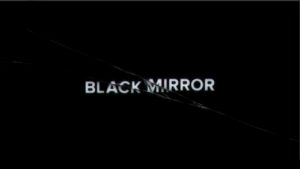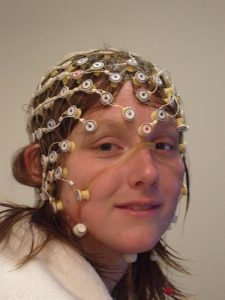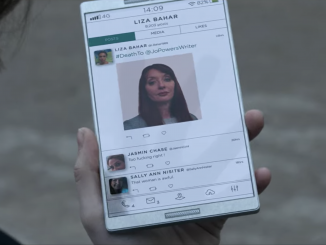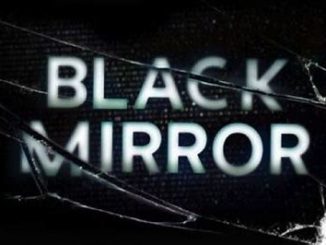
“A woman enters the Black Museum, where the proprietor tells his stories relating to the artifacts,” (IMDb.com, 2011). Rolo Haynes calls them artifacts, we call them potential future technologies that can bring both joy and pain to the world. Could these stories be our future?

Black Mirror is a Netflix series that bases each episode around experiences with current and potential future technologies (IMDb.com, 2011). It shows both the positive and negative impacts of these technologies on individuals and the world around them. The episode Black Museum follows Nish through a technological history museum in future America. It features three main stories about tech in the museum. These experimental devices all have to do with the sharing and relocation of human consciousness. This sharing of information gives us a peek into the possible future of the sharing economy (Demushina, Buletova & Li, 2021). The museum owner, Rolo Haynes, reveals these were all experimental technologies, conveying a potential change and new area of need for governance in the future (Gorwa, 2019).
Black Mirror – Black Museum | Official Trailer [HD] | Netflix
Peter Dawson
The first experimental technology in the Black Museum is Dawson’s Symphatic Diagnoser. A neurotransmitter that allows an individual to feel another’s pain. This was created to allow medical professionals to feel a patient’s pain without any physical consequences, to reach more accurate diagnoses quicker. In this future America, healthcare is free if people agree to “Occasional experimental treatments,” (Brooker, 2017). This implies a lack of regulation of the use of this kind of device. Using this device in its beta stages could lead to potential harm. The technology was effective for Peter Dawson until a patient he was treating died while he was still feeling their pain. This ultimately led to a pain addiction, causing Dawson to destroy himself and others to feed this addiction, resulting in him falling into a coma for the rest of his life. Unregulated medical technology has caused issues in the past, an example being hip replacements in Europe malfunctioning (Kent & Faulkner, 2002). As the show’s technology involves the uploading of information, we can extend these concerns to internet governance.
Due to the global nature of the internet, it is difficult for governments and regulatory organisations to control actions taken on the internet (Gillespie, 2017, Helberger, Pierson & Poell, 2018). The constant flow of information and data occurs much quicker than the passing of legislation and other forms of regulation (Gillespie, 2017). Anonymity and differing setups of various platforms add to this difficulty (Gillespie, 2017). In our current climate, digital platforms collecting and storing this data set their own codes of practice for their sites to achieve regulation (Gillespie, 2017, Gorwa, 2019, Helberger et al., 2018). However, the lack of control over these organisations allows them to be left unscathed when disobeying their own regulations, maintaining distance between themselves and the actual content on their platforms (Gillespie, 2017, Helberger et al., 2018). With these actions not leading to any consequences, how can anyone be held accountable for issues that arise from these platforms? The safety of users is jeopardised. Dawson’s actions that occurred due to his use of this device and collection of the data of others led him to negatively impact the lives of others as well as his own. Haynes, who created the device, never received any consequences due to this. If this device was properly regulated from the start, the potential for harm could have been seen and avoided, saving lives.
This technology not only leads to the questioning of regulation but also how we view the sharing economy. Haynes’ collection of patient sensory data is a form of collecting information shared via a digital platform. We currently understand sharing to be a form of communication with others, allowing for communities to be created online (John, 2018). New tech has enabled different forms of producing and consuming content and information, with each platform’s structure controlling and changing how this is done (John, 2018). The ways technology is built allowing for mediation of how we share and consume information is inverted by the Symphatic Diagnoser. Neither patient nor doctor could control the information being conveyed, openly sharing any and all available data. Dawson’s eventual demise from using this technology shows oversharing can lead to negative consequences. If this future comes to fruition, our view of the sharing economy will need to be re-evaluated (Demushina et al., 2021). If you do not choose what you share or who with, would you still participate in online communities? Would you continue using platforms if it meant receiving an onslaught of information about anyone and everyone? Our understanding and use of communication technologies would be reframed and considered with a higher sense of caution.

The same issues with technology that allows the transferring of consciousness can be seen in different contexts through the other two stories shown in the episode.
Carrie and Jack
After a car crash puts her in a coma, Carrie’s husband Jack has a digital copy of her consciousness implanted in his head, allowing her to communicate with him and experience his physical sensations. Living with another person in his head proves to be difficult, leading Jack to return to Haynes who gives him the ability to pause Carrie and the option to delete her, “Not legally,” killing her (Brooker, 2017). Issues among the couple continue until Haynes offers the solution of transferring Carrie’s consciousness into a stuffed toy. This transference later becomes illegal, meaning Carrie is forced to live forever in a stuffed toy.
“No privacy for him, no agency for her,” (Brooker, 2017).
This situation once again reveals the lack of regulation of these experimental technologies before they are used. The transference of consciousness into a simplistic system became illegal after it happened to Carrie. The need for legislation to keep up with technological and internet development is clear. If this legislation were introduced earlier, Carrie and Jack’s situation could have been avoided (Helberger et al., 2018). The overwhelming nature of the constant sharing of all sensory data ultimately destroyed the couple’s relationship. This shows the impact of sharing information can be easily misjudged and lead to issues (Demushina et al., 2021). If this technology had been forced to be developed further before use through regulation, sensory oversharing could have been avoided, preventing Carrie and Jack’s situation.
Black Mirror | Featurette: Black Museum | Netflix
Clayton Leigh
Alleged murderer Clayton Leigh was approached by Haynes with an offer of financial support for his family for handing over his digital consciousness should he receive the death penalty. Despite his family’s efforts for justice, he was convicted and put to death. Haynes created a hologram of Leigh out of his consciousness and used him as an attraction at the museum, the draw being to “Pull the lever yourself,” on a convicted criminal (Brooker, 2017). After experiencing being put to death multiple times Leigh became silent and unreactive, causing Haynes to lose visitors to the museum. Leigh is forced to live forever in a jail cell.
Leigh misunderstood what sharing his entire consciousness really meant, with this oversharing ultimately leading to a terrible existence. The unregulated nature of this experimental technology allowed Haynes to put Leigh through this torture without facing the consequences of his actions until much later (Gillespie, 2017).

Black Museum highlights the need for better understanding and action towards online governance and the sharing economy. It shows a need for a new perspective of the sharing economy to consider the implications of oversharing through future technologies (Demushina et al., 2021, Nicholas, 2018). Unlimited and uncontrollable sharing of information allows uses of technology never seen before while facilitating unseen overload and exploitation of data (Gillespie, 2017, John, 2018). Without this online data being regulated, further issues of responsibility, accountability and transparency arise (Gillespie, 2017, Gorwa, 2019). We need to consider technological capabilities, regulation and the sharing economy’s combined impact in both the present and the future. Black Mirror warns us of the possible dangers we could face, as the song in Black Museum says, “There is always something there to remind me,” (Brooker, 2017, HarrysMovingCastle, 2018).
Black Mirror O.S.T. (Black Museum) – Always Something There to Remind Me
References
Brooker, C. (Writers), & McCarthy, C. (Director). (2017, 29 December). Black Museum (Season 4, Episode 6) [Television series episode]. In C. Brooker & A. Jones (Executive producers), Black Mirror. Netflix. https://www.netflix.com/watch/80131571
Demushina, O., Buletova, N. E., Li, J., & Youssif, M. M. (2021). Towards a Sharing Economy: Factors, Trends, Risks, and Prospects. In F. Gaol, N. Filimonova, & C. Acharya (Ed.), Impact of Disruptive Technologies on the Sharing Economy (pp. 218-237). IGI Global. http://doi:10.4018/978-1-7998-0361-4.ch013
Gillespie, T. (2017) Regulation of and by Platforms. In J. Burgess, A. Marwick & T. Poell (Eds.), The SAGE Handbook of Social Media (pp. 254-278). London: SAGE.
Gorwa, R. (2019). What is platform governance?. Information, Communication & Society, 22(6), 854-871. http://doi:10.1080/1369118X.2019.1573914
HarrysMovingCastle. (2018, February 27). Black Mirror Analysis: Black museum. [Video file]. Retrieved October 12, 2021, from https://www.youtube.com/watch?v=g61wnc012Jc
Helberger, N., Pierson, J. & Poell, T. (2018). Governing online platforms: From contested to cooperative responsibility. The Information Society, 34(1), 1-14, http://doi:10.1080/01972243.2017.1391913
IMDb.com. (2011, December 4). Black Mirror. IMDb. Retrieved October 12, 2021, from https://www.imdb.com/title/tt2085059/?ref_=ttep_ep_tt
John, N. A. (2018) Sharing Economies. In The Age of Sharing (pp. 69-97). Cambridge: Polity.
Kent, J. & Faulkner, A. (2002). Regulating human implant technologies in Europe–understanding the new era in medical device regulation. Health, Risk & Society, 4(2), 189-209. http://doi:10.1080/13698570220137060

Always Something There to Remind Me by C Ber is licensed under a Creative Commons Attribution 4.0 International License.



